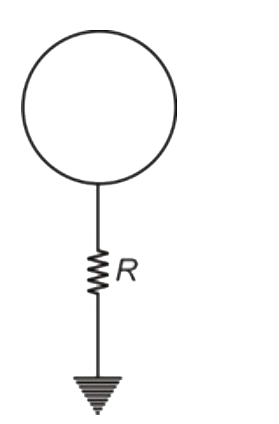The air if filled in a balloon and the volume of balloon increases gradually. Find the rate of increase of volume of balloon with radius when of balloon becomes 30 cm.
Video Solution
Text Solution
Here radius of balloon r = 30 cm
Volume of balloon, V=43πr3
Rate of increase of volume of balloom w.r.t radius
dVdt=ddr(43πr3)=43π×3r2=4πr2
When r =30 cm = 0.30m
dVdr=4×227×(0.30)2=1.13m2
|
Topper's Solved these Questions
- MATHEMATICAL TOOLSBOOK - PRADEEPCHAPTER - MATHEMATICAL TOOLSEXERCISE - PROBLEMS FOR PRACTICE
53 Videos
- MATHEMATICAL TOOLSBOOK - PRADEEPCHAPTER - MATHEMATICAL TOOLSEXERCISE - M.C.Q
5 Videos
- LAWS OF MOTIONBOOK - PRADEEPCHAPTER - LAWS OF MOTIONEXERCISE - Assertion- Reason Type Questions
17 Videos
- OSCILLATIONS AND WAVESBOOK - PRADEEPCHAPTER - OSCILLATIONS AND WAVESEXERCISE - multiple choice Questions
13 Videos
Similar Questions
Knowledge Check
Which gas is filled in the balloon?
AHydrogenBCarbon dioxideCHeliumDOxygenA balloon is pumped at the rate of a cm3 /minute. The rate of increase of its surface area when the radius is b cm, is
A2a2b4cm2/minBa2bcm2/minC2abcm3/minDNone of theseA conducting bolloon of the radius a is charged to potential V0 and held at a large height above the earth ensures that charge distribution on the surface of the balloon remains unaffected by the presence of the earth. It is connected to the earth through a resistance R and a value in the balloon is opened . The gas inside the balloon escapes from value and the size of the balloon decreases. The rate of decrease in radius of the balloon is controlled in such a manner that potential of the balloon remains constant. Assume the electric permittivity of the surrounding air equals to that of free space (ε0) and charge cannot leak to the surrounding air.

The rate at which radius r of the balloon changes with time is best represented by the equationAdrdt=14πε0RBdrdt=−14πε0RCdrdt=14πε0aRDdrdt=−r4πε0aR
The volume of a spherical balloon is increasing at a rate of 25cm3/sec. Find the rate of increase of its curved surface when the radius of balloon is 5 cm.
View SolutionThe surface area of a spherical balloon is increasing at the rate of 2cm2sec. At what rate the volume of the balloon is increasing when the radius of the balloon is 6 cm?
View SolutionThe volume of a spherical balloon is increased by 700%. What is the percentage increase in its surface area ?
View SolutionA balloon, which always remains spherical, has a variable radius. Find the rate at which its volume is increasing when the radius when the later is 10 cm
View SolutionThe surface of a spharical balloon is increase of its volume when its radius is 6 cm.
View Solution
